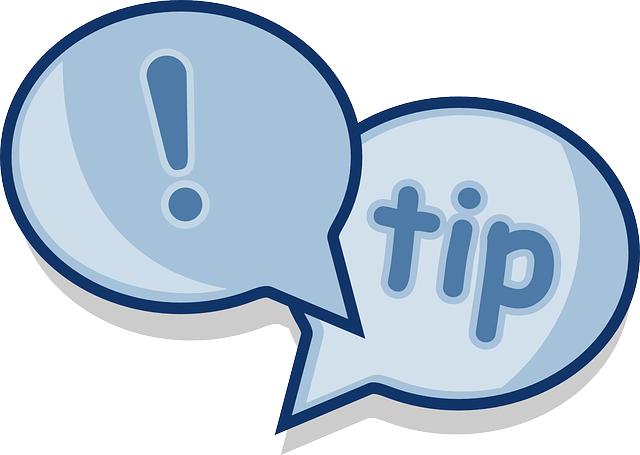
ChatGPT shines brightly as a pinnacle of innovation and practicality within the ever-changing realm of artificial intelligence. Designed specifically for beginners keen on unlocking the potential of this AI language model, this guide offers an all-encompassing overview.
Whether your interest lies in text generation, coding, or content creation, this guide provides the essential insights needed to leverage ChatGPT's capabilities effectively.
What Is ChatGPT?
ChatGPT is a generative pre-trained transformer (GPT) language model developed by OpenAI. It's fine-tuned to understand and generate text, providing relevant responses to user inputs.
This AI bot can perform many tasks, from language translation to data analysis, making it a powerful tool for various applications.
How to Sign up for Chat GPT

Signing up for ChatGPT, the AI chatbot developed by OpenAI, is a straightforward process that grants you access to its wide array of capabilities, from generating text to engaging in detailed conversations.
Here's a step-by-step guide to get you started:
Step 1: Visit the OpenAI Website
Start by navigating to the OpenAI website (openai.com) using your web browser. Look for the section dedicated to ChatGPT or a sign-up/login button.
Step 2: Choose Sign Up
On the OpenAI website, you will likely see options to sign in or sign up. If you don't already have an account, click the sign-up option.
Step 3: Provide Your Details
You'll be asked to provide some basic information during the sign-up process. It typically includes your name, email address, and a password to create your account.
Step 4: Phone Verification
For security and verification purposes, OpenAI requires a valid phone number. You must enter your phone number and the verification code sent to your mobile device to confirm your account.
Step 5: Connect a Google or Microsoft Account
Sometimes, you might also have the option (or requirement) to connect your Google or Microsoft account. This step ensures a streamlined login process and may offer additional features or integrations.
Step 6: Agree to Terms and Get Started
Before signing up, you must agree to an OpenAI account regarding service and privacy policy. Read these documents to understand how your data will be used and the guidelines for using ChatGPT.
Step 7: Explore ChatGPT
Once you've completed the sign-up process, you can start exploring ChatGPT. You can begin by typing prompts or questions into the chat interface and experimenting with the AI's capabilities.
Tips for a Smooth Sign-up Process
Ensure Accuracy: Double-check the information you provide during sign-up, especially your phone number and email address, to avoid any issues with account verification.
Valid Phone Number: Make sure the phone number you provide is valid and capable of receiving SMS messages, as this will be crucial for completing the verification step.
Privacy Considerations: Consider your privacy and security when linking third-party accounts like Google or Microsoft. Understand the permissions you're granting and how your data will be used.
Signing up for ChatGPT opens up a world of possibilities for AI-driven text generation, conversation, and more. Whether you're seeking assistance with content creation or educational support or simply curious about AI, ChatGPT offers a powerful tool to explore.
How to Use ChatGPT in 6 Simple Steps

ChatGPT can be an enriching and efficient experience when approached with the right know-how. Here's a simplified guide designed to help beginners navigate and make the most out of ChatGPT in six simple steps:
1. Sign Up or Log In
To begin, you need to access ChatGPT. If you haven't already, create an account on the OpenAI website using a valid mobile number for phone verification, and choose either a Google or Microsoft account for registration. If you already have an account, log in with your credentials on the chat GPT login page.
2. Initiate a New Chat
Once logged in, you will find yourself on the home page. Look for an option to start a new chat or conversation. It is your entry point into interacting with the AI. Clicking this will open a new chat window where you can begin typing your prompts or questions.
3. Type Your Prompt
Type in your query, request, or instruction in the chat window. Whether you're seeking help with writing, need answers to questions, or are exploring creative ideas, how you phrase your prompt will guide ChatGPT in generating a relevant response. Be as specific as possible to get the best results.
4. Submit and Wait for the Response
After entering your prompt, hit the send button (usually depicted by an icon or the enter key). ChatGPT will process your input and generate a response.
The AI's ability to understand context and provide coherent answers is based on a vast training data set, ensuring high-quality content generation.
5. Interact Further
One of ChatGPT's strengths is its capacity for extended conversations. You can ask follow-up questions, request more details, or even ask for clarification on the initial response. This step is crucial for deep dives into topics or refining the answers received.
6. Refine or Restart
If the response doesn't meet your expectations or you wish to explore a different angle, you can refine your query with additional context or ask new questions. Feel free to prompt ChatGPT with different instructions if the first answer doesn't fully address your needs. You can also start a new chat session to tackle another topic or question.
Bonus Tip: Utilize Features and Settings
Explore ChatGPT's settings and features, such as saving your chat history for future reference or adjusting preferences. The platform often introduces new features to enhance user experience, offering more personalized and efficient interactions.
ChatGPT Prompt Examples

Crafting effective prompts is key to maximizing the utility of ChatGPT. A well-structured prompt not only directs the AI to understand the context of your request but also sets the stage for receiving precise and relevant responses. Here are some examples across various categories that illustrate how to engage with ChatGPT effectively:
Creative Writing
Story Ideas: "Generate a list of story ideas about time travel with unexpected twists."
Character Development: "Create a detailed character profile for a hero with a secret identity living in a futuristic city."
Dialogue Writing: "Write a dialogue between two characters stranded on a deserted island, discussing their escape plan."
Professional and Academic Writing
Email Drafting: "Draft a professional email to a client apologizing for a delayed project delivery and proposing a new timeline."
Research Ideas: "Suggest five research topic ideas for a thesis on renewable energy technologies."
Summary Writing: "Summarize the key points of the latest IPCC report on climate change in 300 words."
Technical Assistance
Coding help: "Provide a Python script to merge two sorted lists into a single sorted list without using built-in functions."
Debugging: "Explain why the following JavaScript code snippet isn't working as expected and suggest corrections."
function add(a, b) {
return a + b;
}
console.log(add("2", 3));
Technology Recommendations: "List the top three CRM software for small businesses and their key features."
Educational Support
Math Problem Solving: "Explain how to solve quadratic equations using the quadratic formula with an example."
Language Learning: "Provide examples of common French phrases used in daily conversation with their English translations."
Science Explanation: "Explain the process of photosynthesis in simple terms for a middle school student."
Personal Development and Advice
Fitness Planning: "Create a 4-week beginner workout plan focusing on strength and flexibility."
Nutrition Advice: "Suggest a 7-day vegetarian meal plan that includes complete proteins."
Career Guidance: "List effective strategies for negotiating a higher salary offer when accepting a new job."
General Knowledge and Trivia
Historical Facts: "What were the main causes and consequences of the French Revolution?"
Science Trivia: "Explain the significance of the Higgs boson discovery."
Cultural Insights: "Describe the traditional Japanese tea ceremony and its cultural importance."
Each of these prompts is designed to elicit specific, helpful, and engaging responses from ChatGPT, showcasing its versatility across a broad range of uses. Remember, the clarity and specificity of your prompts greatly influence the quality and relevance of the responses you receive.
ChatGPT Features
ChatGPT, developed by OpenAI, is a state-of-the-art AI language model with many features designed to cater to diverse needs and applications. ChatGPT's capabilities make it a versatile tool for users across various domains, from generating text to answering questions, translating languages, and more.
Here's an overview of some of the critical features of ChatGPT:
Text Generation
Conversational Interface
Educational Support
Technical Assistance
Information and Research
Language Translation
Personalization and Customization
Accessibility
New and Updated Models
These features collectively make ChatGPT a powerful tool for various applications, from creative writing and content generation to technical support, education, and beyond. Its ability to process and generate human-like text data based on the vast amount of training data allows for high-quality, relevant, and context-aware interactions, making it a prominent example of the advancements in artificial intelligence technology.
Useful ChatGPT Tips

Be Specific with Your Prompts: The more detailed your prompts, the more accurate and relevant ChatGPT's responses will be. Specificity helps the AI understand precisely what you're asking for.
Use Follow-Up Questions: Don't hesitate to ask follow-up questions to clarify or expand on a response. ChatGPT can handle extended conversations and provide more detailed information based on new inputs.
Refine Your Questions Based on Responses: If the initial response isn't quite what you want, refine your question or provide additional context. This iterative approach can lead to more accurate answers.
Experiment with Different Prompt Styles: ChatGPT can handle many prompt styles, from direct questions to creative scenarios. Experimenting with different types of prompts can help you understand how to get the best responses for various needs.
Leverage ChatGPT for Creative Assistance: Beyond factual information, ChatGPT can help generate ideas, write stories, compose poems, or brainstorm creative solutions to problems.
Utilize ChatGPT for Learning and Education: Use ChatGPT as a learning tool to explain complex concepts, practice language skills, or get help with homework and study topics.
Ask for Summaries: When dealing with long texts or complex information, ask ChatGPT to provide a summary. It can be beneficial for quickly understanding the essence of articles, reports, and research papers.
Explore ChatGPT's Coding Capabilities: If you're a developer or learning to code, use ChatGPT to understand programming concepts, get and write code examples, or debug errors.
Understand ChatGPT's Limitations: ChatGPT may only sometimes provide perfect answers, especially for highly specialized or recent topics. Its knowledge is based on information available up to its last training cut-off.
Provide Feedback When Possible: If you're using a platform that allows for feedback on responses, take the time to provide it. It helps improve the model's future performance, even though individual learning doesn't persist across sessions for privacy reasons.
These tips can help you navigate ChatGPT more effectively, whether for work, study, creative pursuits, or general curiosity.
Conclusion
ChatGPT is a testament to the advancements in artificial intelligence, offering a versatile platform for generating coherent responses to various prompts. From language translation to content creation, its capabilities are vast.
By following the steps outlined in this guide, beginners can unlock the full potential of this AI tool, transforming how they interact with technology and streamline their tasks. Remember, the journey into AI begins with curiosity and a willingness to explore, and with ChatGPT, the possibilities are endless.
Unlock your daily dose of innovation with Prompt Engineering Daily. Subscribe now to stay ahead in the world of engineering breakthroughs!
FAQs
How much is ChatGPT per month?
The premium subscription for ChatGPT, ChatGPT Plus, is available at a monthly fee of $20. This subscription model ensures that users receive priority access, even during periods of high demand when the free version may be unavailable, and benefits from quicker response times.
Why does ChatGPT require login?
Open AI's ChatGPT platform requires mobile phone authentication to use its free, open-source software. It aims to help ensure that the platform is used only by legitimate users, not malicious actors or bots.
Can I use ChatGPT on my phone?
Yes, ChatGPT is available on mobile devices. You can use ChatGPT on a mobile browser (e.g., Google Chrome) or the official ChatGPT app for iOS or Android.
No matter where you choose the AI chatbot interface, it is free to use and download.
Can ChatGPT be downloaded as an app?
You can use the ChatGPT website as a Windows app, pin the app to the taskbar using Microsoft Edge or Chrome web browser, or download the official Chat GPT app from the app store.
Does ChatGPT give the same answers to everyone?
ChatGPT is consistent in its approach to understanding and responding to queries. The uniqueness of each query and the evolving nature of AI technology mean that it gives different answers to everyone.
